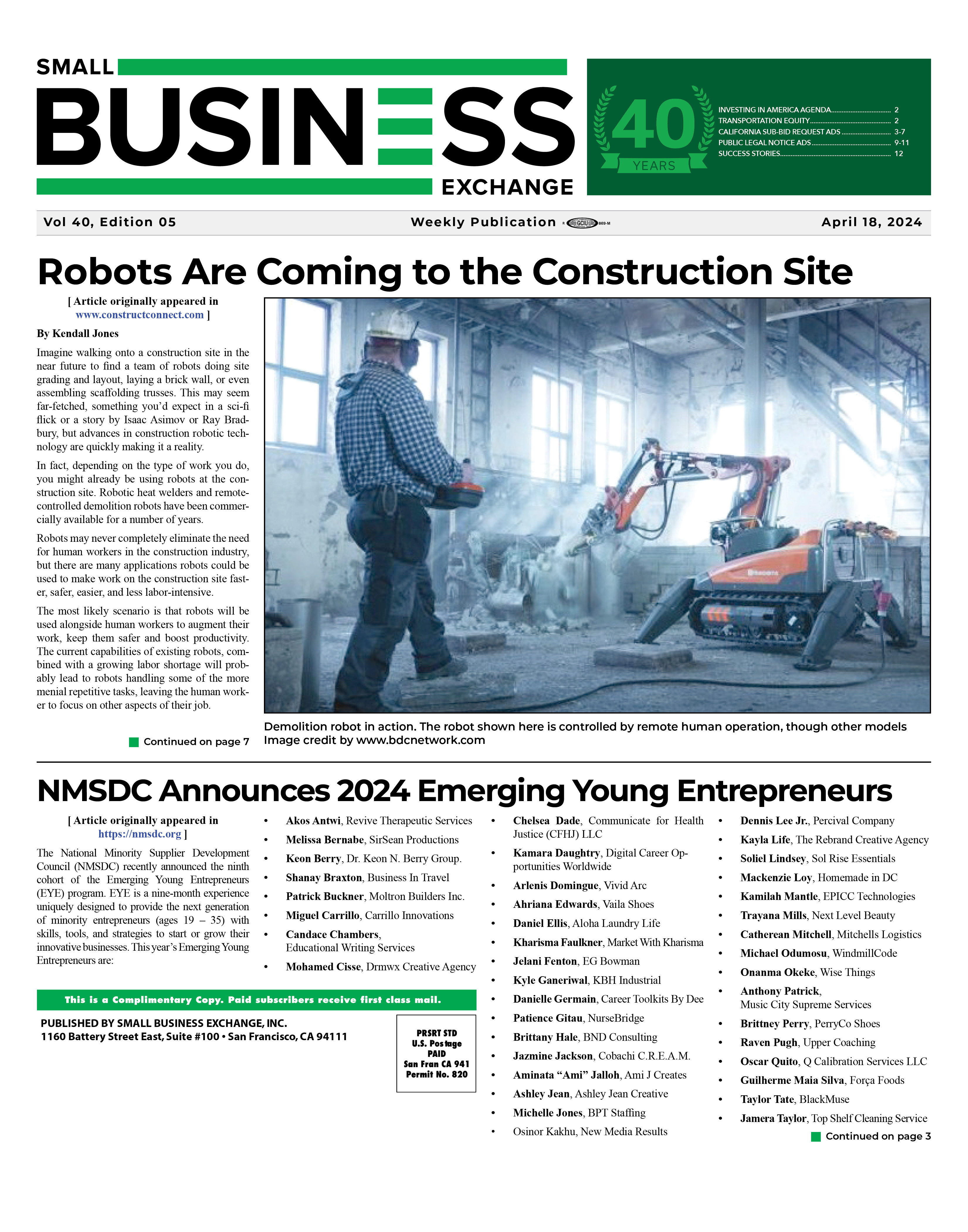|
|
4 Construction Technology Trends to Watch in 2021
02/27/2021
[ Article was originally posted on Autodesk Construction Cloud Blog. https://construction.autodesk.com ] The adoption of technology is accelerating due to both demand and necessity, with construction businesses across Asia Pacific managing old and new challenges. These include evolving safety and distancing requirements; supporting remote workers; ever-changing operational, supplier and project management needs; and a renewed focus on the environment with increased sustainability across project lifecycles. Technology will support the construction industry in elevating all these factors, enabling better integration across the different phases of the construction model towards a new way of operating. This will help to create safer and more productive workplaces, a more resilient sector, and upskilling of the workforce. I anticipate we’ll also see the efficient use of any government COVID-19 stimulus funds being invested in innovation to improve operations including procurement, construction and facility management. Here are four construction technology trends to watch in 2021: 1. Subcontractor management platforms will increase in popularity.To date, much of the construction industry across Asia Pacific has widely adopted construction point solutions to address basic needs and to engage and manage subcontractors across their projects, creating operational inefficiencies and potentially costly development delays. Construction management platforms will emerge post COVID-19 for head contractors and specialist contractors to manage business requirements through a seamless integration and aggregation of design and field data to control the process. The right subcontract management platform will enable the industry to move from fragmented, project-centric internal platforms in their businesses to strong internal platforms with a more standardised and integrated approach. This will enable an improvement in margins and increased understanding of real project costs. In 2021, we’ll likely also see increasing take up of software that enables preconstruction teams to quickly solicit bids with customisable templates and compare them side-by-side; track internal budgets with real-time cost updates; easily and transparently collaborate with other estimators and owners on the team; and gain valuable insight into historical bid data and reports to optimise for future projects. 2. Streamlined workflows across entire construction projects will improve efficiencies.The COVID-19 pandemic has seen much of the industry working and collaborating remotely, and it’s evident that some degree of remote working will continue for most companies. This alone has created the need for technology to enable new processes, policies and workflows across projects. Digital infrastructure projects are also set to grow as digitisation accelerates due to remote working. In addition, companies are more cost-conscious than ever and are looking at ways to improve and develop efficiencies to remain competitive. Technology is supporting streamlined workflows in this new era of convergence where industries, processes and teams are embracing innovative ways of making and have new challenges. In 2021, teams, data and workflows will be increasingly connected. Streamlined workflows will be made possible through software such as Autodesk Construction Cloud; an integrated cloud-based platform for the management of construction projects. It offers a single platform to store all data, connecting workflows throughout the different stages of a project, from design to operations. It removes the barriers of disconnection and uncertainty that plague construction projects of all sizes and dramatically increases the depth, breadth and connectivity of the products teams are already using today. 3. Safety will be at the forefront of construction business strategy.In construction, safety has always been a concern but in today’s environment it is paramount. Workers must be separated and socially distanced to reduce potential spreading of the virus, while cleanliness and additional safety processes and procedures are required. On a construction site, where teams generally work together, social distancing can be difficult to achieve. Technologies such as simulation or generative design can help support companies to identify the right safety processes to implement, and how they can reimagine spaces when it comes to physical distancing and reducing the potential for virus transmission. Generative design is backed with analytical data that includes constraints like social distancing, epidemiologic criteria or air flow in a space. 4. Accessing 3D models with data in the field will provide a benefit for project teams and customers.Design technology such as 3D modelling – or more specifically, Building Information Modelling (BIM) – has been growing in popularity for the construction industry since before the pandemic and take-up will continue to ramp up in 2021. BIM provides virtual models of buildings, enabling the designer to construct a digital model before bringing the design to life physically in the real world. This reduces the potential for errors and can create incredible cost and development efficiencies on projects. Owners and Government will increase their requirements to have data rich models to ensure compliance and ensure it will be a high performing asset.
In 2021, as the construction industry starts to rebound from COVID-19, we can expect APAC businesses to leverage technology further, connecting their most important assets to their people faster, and to strategically position their businesses to maintain a competitive edge. Back To News |
|




